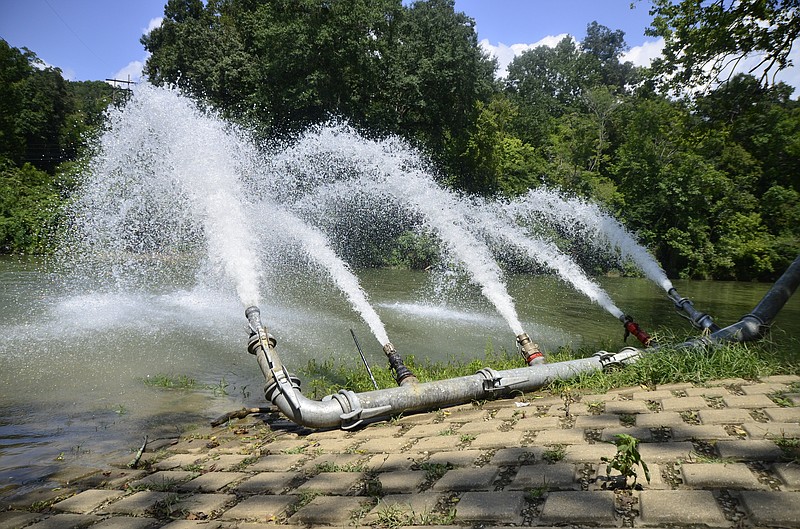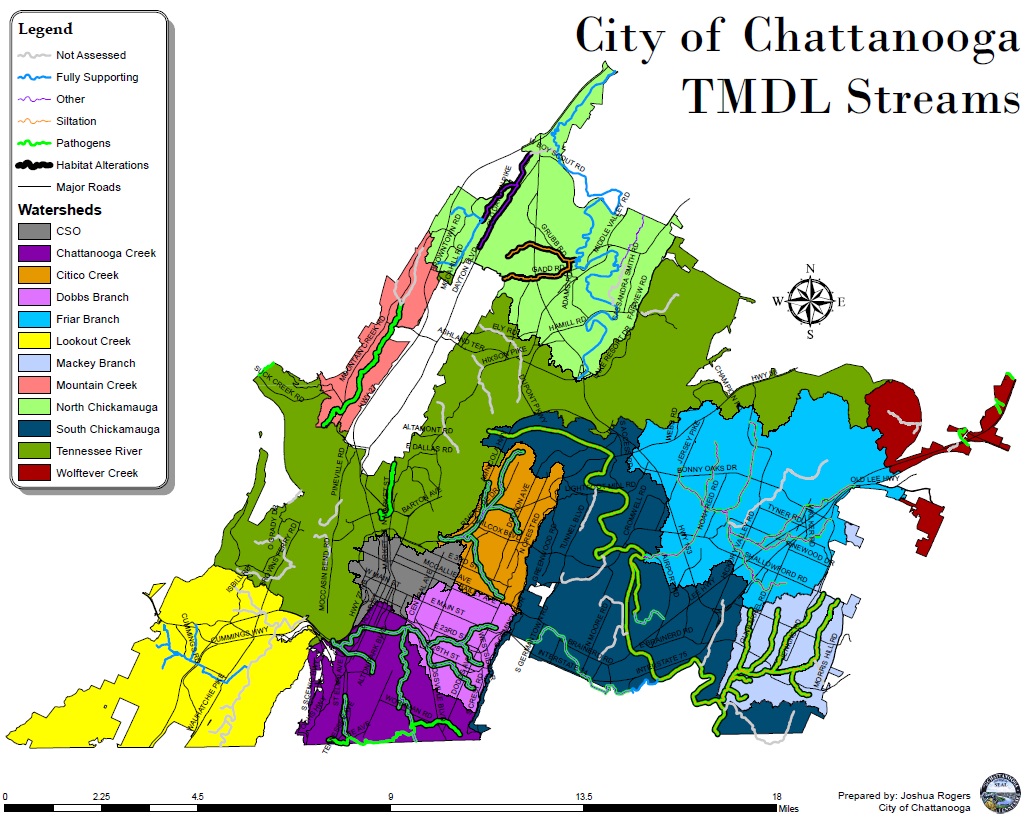South Chickamauga Creek Watershed
Covering 45,122 acres of land, the South Chickamauga Creek basin is the largest of Chattanooga’s eight watersheds. It extends beyond Chattanooga into Georgia.Areas within the watershed: Brainerd, East Brainerd and Missionary RidgeProminent roadways in watershed: Shallowford Road, East Brainerd Road, Bonny Oaks Drive, Harrison Pike, Lee Highway and Gunbarrel RoadHigh traffic commercial areas within watershed: Hamilton Place and Chattanooga AirportMost prevalent pollutants: Pathogens and siltationSource: Chattanooga Public Works, Engineering Division
Local developers and Chattanooga City Council candidates representing East Hamilton are hoping to reverse a 2014 regulation they say has restricted growth throughout the area.
The regulation, adopted under Mayor Andy Berke's administration, requires developers designing sites larger than 1 acre within the South Chickamauga Creek watershed to retain the first 1.6 inches of rainfall on the property to prevent it from carrying pollutants into the creek and, ultimately, the Tennessee River.
The stream is on a federal list of polluted waterways due to sediment impairment, as well as for habitat alteration.
However, state guidelines set by the Tennessee Department of Environment and Conservation and the United States Environmental Protection Agency only call for a 1-inch retention, and some say the additional 0.6 inch has already turned business away from the area.
Councilman Larry Grohn said so far, the extra requirement has led to the collapse of three projects in his district that would have brought a total of 233 single-family homes to East Hamilton, an area local developer and Regional Planning Commission member Barry Payne has called "severely under inventory" in terms of available lots.
Grohn said the costs of meeting additional stormwater requirements could drive developers to build in the nearby unincorporated areas, where restrictions are more relaxed, but that those new residents' presence will still be felt along places like East Brainerd Road and Apison Pike.
"The city's still going to have to deal with that traffic, but we're not going to get any of the property taxes to be able to handle that problem," he said.
Increased costs for developers also mean increased cost for consumers, said Grohn. Designs to capture the extra 0.6 inch of stormwater runoff can cost developers about $120,000 more per acre, which increases the price of a home by $20,000 to $25,000, he explained.
"A lot of people just can't reach up that high," Grohn said, adding that the increase would bring the price of a home to about $300,000. "It's hurting homeowners, it's hurting developers, it's hurting property taxes in the city, the sales taxes that would be generated by people living in the new homes. It's having a negative effect on the economy of Chattanooga."
The 1.6-inch regulation, part of a shift toward low-impact development, was implemented to up water quality standards and protect the threatened Chickamauga crayfish species that lives in the creek.
"We believed it to be less arduous than other programs," said Assistant City Engineer Jim Luebbering, referencing severe septic system restrictions and increased erosion and sediment control measures developers would have to meet.
Mike Price, who works with many of the area's developers as owner of MAP Engineers, said increasing water retention capabilities from 1 inch to 1.6 inches does not increase water quality by a comparative measure.
Studies have shown that most pollutants are generated within the first inch of rainfall, the civil engineer explained, meaning the extra 0.6 inch may only increase water quality by 2 or 4 or 6 percent.
"So in other words, the protections the city thought they were going to get really didn't occur ultimately at the end of the day by increasing the amount of rainfall to be contained on-site," said Price. "I think it was a good-faith effort on behalf of the city to try and come up with some additional protections for South Chickamauga Creek, but I think ultimately, that number [1.6] was somewhat pulled out of the air."
Luebbering said the 1.6-inch standard matches the federal government's design standard for water quality treatment, but he added that the city is researching other, similar environmental measures that might be just as protective.
"We are in discussions with Home Builders Association and other development community representatives regarding alternative environmental protection measures that might allow us to swap out or relax the 1.6-inch initiative," he said.
With March elections for the Chattanooga City Council fast approaching, Darrin Ledford, who is running unopposed for Grohn's District 4 seat, is also hoping to revise the regulation by working with council members to seek a policy change if awarded a place on the board. Price said he's hoping for a collaboration that will satisfy both city officials and local developers.
"Hopefully, with some input from the development community, there can be some revision to these that still protects water quality - which is everyone's goal - but without penalizing the developer, which ultimately penalizes us as a consumer," said Price.

